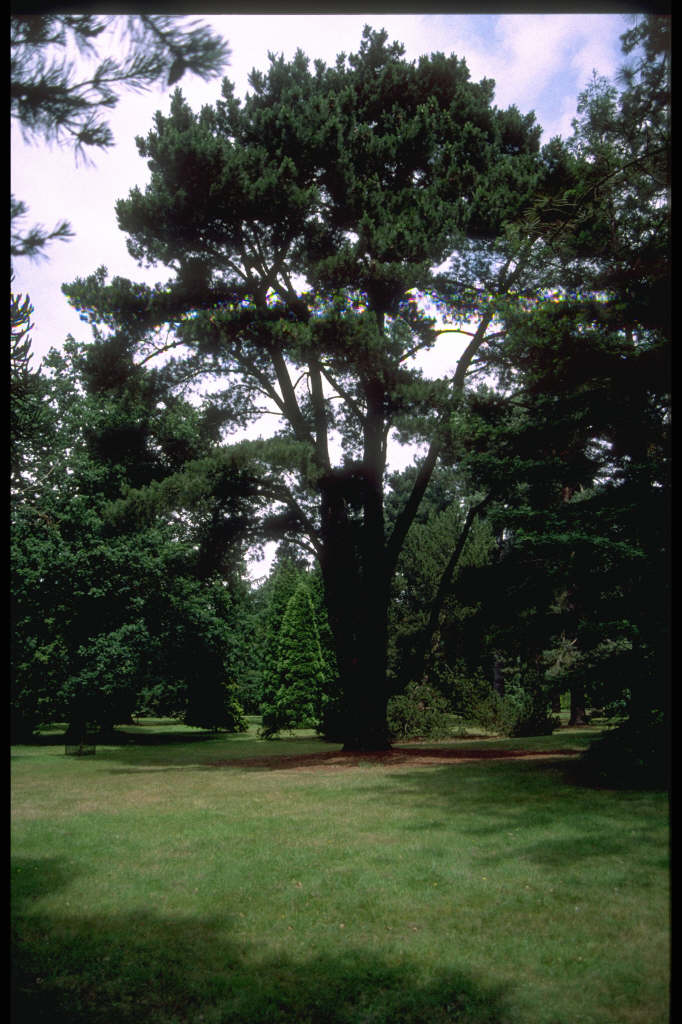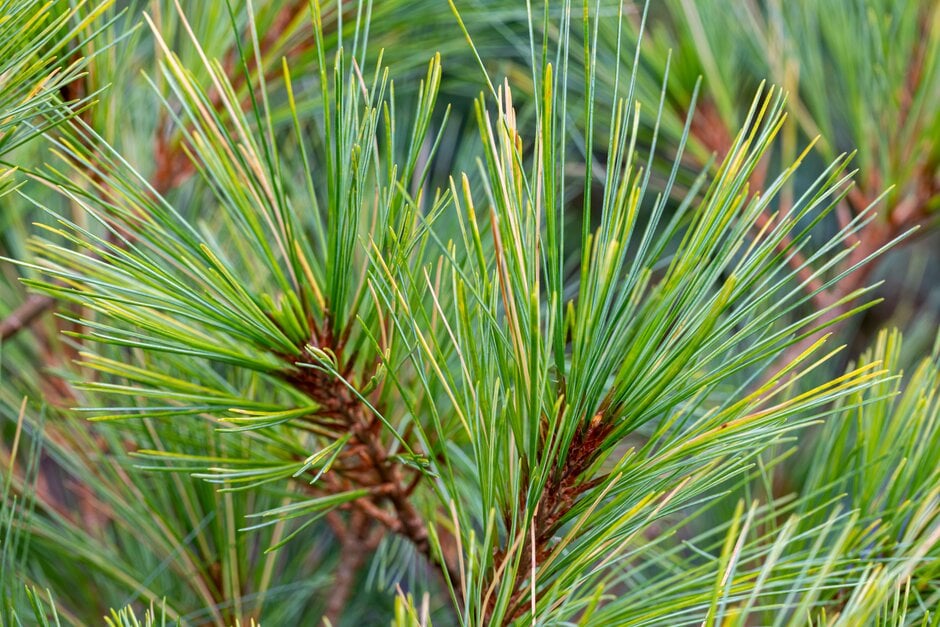Pinus radiata
Monterey pine
A vigorous evergreen conifer making a large tree to 30m or more, developing a broad rounded crown with maturity. Dense dark green needles in threes, and persistent, conical-ovoid cones to 15cm in length
Size
Ultimate height
Higher than 12 metresTime to ultimate height
20–50 yearsUltimate spread
Wider than 8 metresGrowing conditions
Moisture
Well–drainedpH
Acid, Alkaline, NeutralColour & scent
| Stem | Flower | Foliage | Fruit | |
| Spring | Green | Brown | ||
|---|---|---|---|---|
| Summer | Green | Brown | ||
| Autumn | Green | Brown | ||
| Winter | Green | Brown |
Position
- Full sun
Aspect
North–facing or East–facing or South–facing or West–facing
Exposure
Exposed or ShelteredDrought resistance
Yes Hardiness
H6Botanical details
- Family
- Pinaceae
- Native to GB / Ireland
- No
- Foliage
- Evergreen
- Habit
- Columnar upright
- Genus
Pinus can be shrubs or large, evergreen trees, some species with attractive bark, developing an irregular outline with age and bearing long needle-like leaves in bundles of 2, 3 or 5; conspicuous cones may fall or remain on the tree for years
- Name status
Correct
- Plant range
- USA (California), Mexico
How to grow
Cultivation
Grow in any well-drained soil. Suitable for coastal areas. Fast growing. See Trees: buying and planting specimens
Propagation
Propagate by seed
Suggested planting locations and garden types
- Coastal
- Low Maintenance
- Hedging and screens
Pruning
No pruning required
Pests
May be susceptible to adelgids, conifer aphid, sawfly larvae, and pine shoot moth
Diseases
May be susceptible to honey fungus and needle cast diseases
Love gardening
Sign up to receive regular gardening tips, inspiration, offers and more
View our Privacy Policy
Get involved
The Royal Horticultural Society is the UK’s leading gardening charity. We aim to enrich everyone’s life through plants, and make the UK a greener and more beautiful place.

